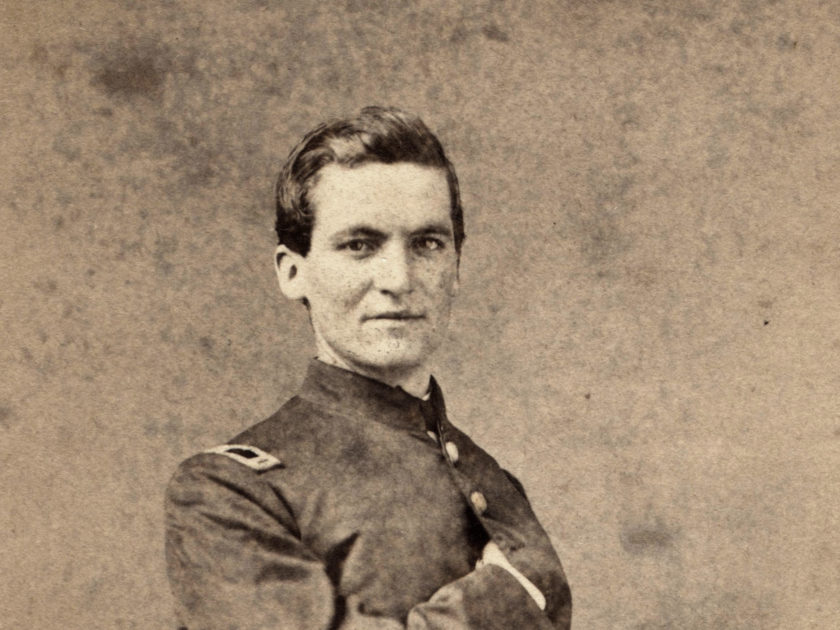In the sprawling cavalry fight near Brentwood, Tenn., on March 25, 1863, a beardless Union aide de camp, all of 18 years old, found himself in deep trouble.

Lt. Green Clay Goodloe, according to a biographical sketch, “in returning from delivering an order found himself surrounded by rebels and had to run the gauntlet. After emptying his holster pistols, he laid flat on his horse, relying upon his spurs and his ‘Lexington.’ They brought him safely home, but he had a bullet-hole through his pants to remind him of the amiable intentions of his Southern brethren.”
Goodloe, a son of Kentucky who hailed from a prominent family, traced his military legacy back to colonial ancestors. Prominent among his relations was his great-grandfather and namesake, Green Clay, a wealthy slave owner who fought in the Revolution and the War of 1812. When the Civil War came, his influential family backed the Union. Clay, then 17, joined the 4th Kentucky Cavalry and reportedly fought with the courage of a veteran in 10 engagements. During part of this time, he acted as an aide to his uncle, Maj. Gen. Green Clay Smith. He also served in the 23rd Kentucky Infantry.

Goodloe left the cavalry in 1863 to attend West Point. But before graduating from the Academy, he found his way to the Marine Corps, where he enjoyed a long career that ended in 1909 with his retirement as brigadier general. Upon his death in 1917, his wife and son survived him.
His son and namesake would go on to graduate from the Naval Academy and serve as a lieutenant commander and pilot during World War II. Awarded the Distinguish Flying Cross twice and the Purple Heart, he was killed in action in the Pacific Theater on June 14, 1945. Although his body was never recovered, he is remembered with an “In Memory of” stone at Arlington.
This portrait is part of the Arlington National Cemetery (ANC) Book Project. Established by Jim Quinlan, owner of The Excelsior Brigade, its mission is to identify approximately 15,000 Civil War veterans interred on the hallowed grounds of the cemetery, and to provide a biographical sketch and photograph of each individual. If you have an image to share, or would like more information about the ANC project, please contact Jim at 703-307-0344.

